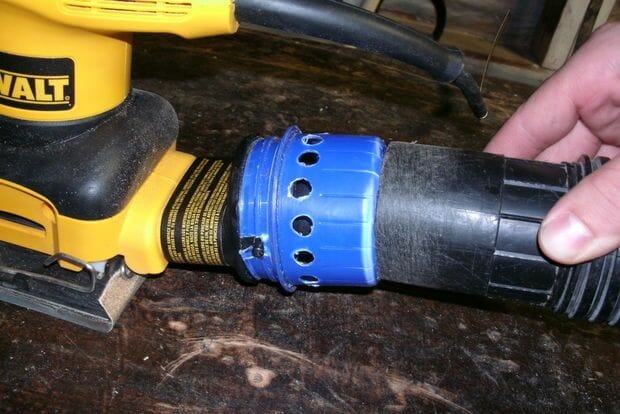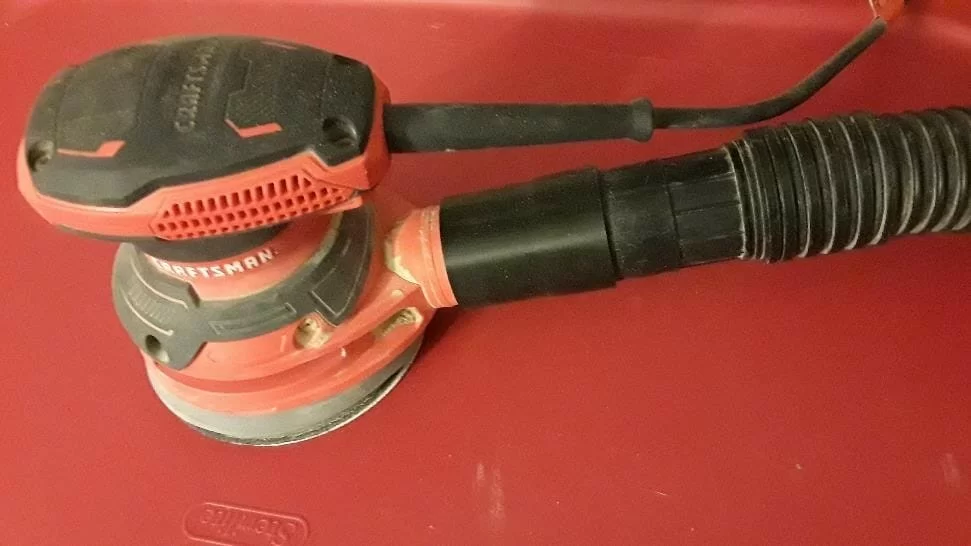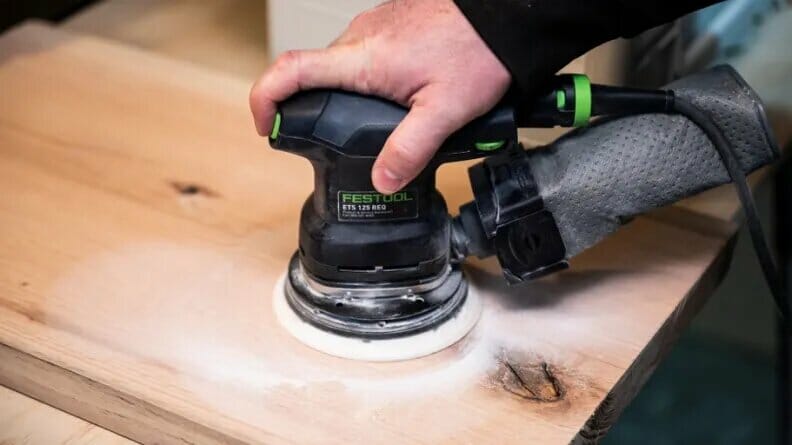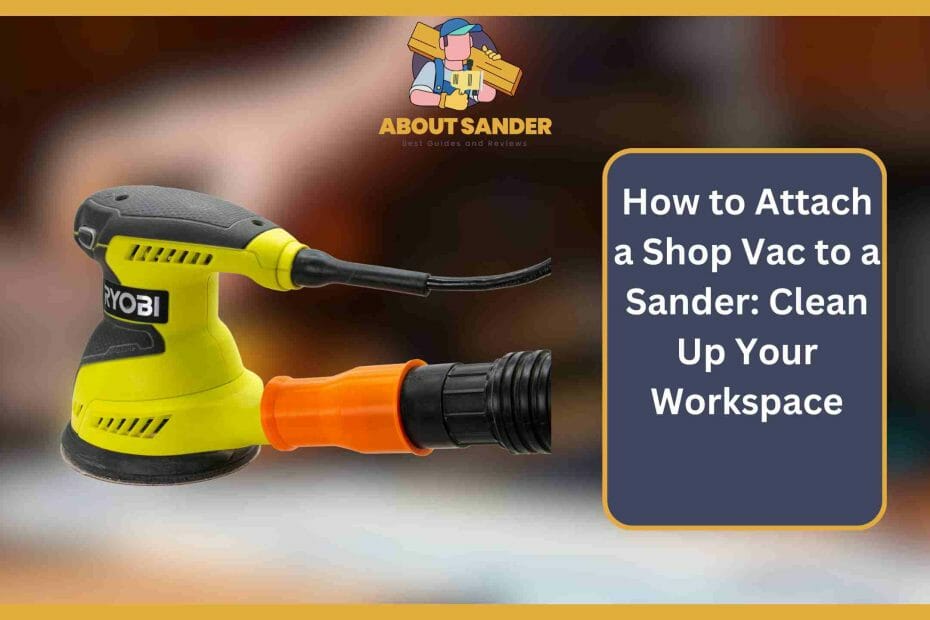Our step-by-step guide teaches how to attach a shop vac to a sander. Achieve efficient dust collection with an orbital sander shop vac attachment and keep your workspace clean.
Follow our tips for an electric orbital sander with a vacuum attachment to improve the suction and prolong the lifespan of the branch.
Key Takeaways:
Here are the key takeaways on how to attach a shop vac to a sander:
- Use the right size adapter for your sander and vacuum hose.
- Ensure the vacuum hose is securely attached to the adapter and the sander.
- Use a clamp or tape to secure the connection if necessary.
- Empty and clean the vacuum bag regularly for optimal suction.
- Check the vacuum hose for clogs and remove them as needed.
- Store the sander and attachment properly in a dry and clean place.
How to Attach a Shop Vac to a Sander? A Step-by-Step Guide
If you’re tired of dust and debris flying around your workspace while sanding, you need to attach a shop vacuum to your sander. Not only does it keep your space cleaner, but it also improves your sanding efficiency. Here’s how to connect the shop vacuum to the sander:

Step 1: Choose the Right Shop Vacuum for Your Sander
To attach a shop vacuum to your sander, the first step is to choose the right vacuum for your sander. Here’s what you need to consider:
1. Check the Airflow Capacity:
The airflow capacity of your sander determines how much air it can suck in per minute. Ensure that your shop vacuum can handle the airflow of your sander to achieve efficient dust collection. You can find the airflow capacity of your sander in its specifications.
2. Identify the Vacuum Hose:
The type of vacuum hose that will fit your sander’s dust collection port is also an essential consideration. You can choose a universal hose that fits most sanders or one specifically designed for your sander.
3. Choose a Suitable Filter:
Your shop vac filter is also essential. Make sure that it can capture the type of debris that you’ll be generating while sanding. A HEPA filter is ideal for capturing fine dust particles.
4. Portability and Maneuverability:
You might need to move around your sander and vacuum during your sanding work. Therefore, ensure your shop vacuum is portable and easy to manoeuvre.
5. Durability:
You want your shop vacuum to last, so choose one sturdy and durable one. A shop vac with a warranty is a good investment.
Choosing the right shop vacuum for your sander ensures that your dust collection system works effectively. Make sure to check the specifications of your sander, identify the type of vacuum hose that will fit your sander, and consider the filter, portability, and durability of the shop vac.
With the right vacuum, you can easily attach the shop vacuum to the sander and achieve efficient dust collection.
Step 2: Prepare the Electric Orbital Sander for Vacuum Attachment
Before attaching a shop vac to your sander, you must prepare the sander for vacuum attachment. Here’s how to do it:

1. Check Your Sander for Any Damages or Defects
Inspect your sander to ensure it’s in good condition and free of damage or defects. If you find any issues, get them repaired before attaching the shop vac. This will ensure that your sander works efficiently with the vacuum attachment.
2. Assemble the Parts Needed for Attaching the Shop Vac
You will need a few parts to attach the shop vac to your sander. These include clamps, tape, or any other attachment tool required for connecting the vacuum hose to the dust collection port of your sander. Collect these parts and keep them ready for attachment.
3. Adjust the Dust Collection Port to Fit the Vacuum Hose Properly
Ensure that your sander’s dust collection port is adjusted to fit the vacuum hose properly. If the dust collection port is too big, you may need an adapter to check the hose. If it’s too small, you’ll need to adjust it accordingly. This will ensure adequate suction and that the dust and debris are collected efficiently.
Step 3: Attach the Shop Vac to the Orbital Sander
Attaching the shop vac to your sander is crucial in ensuring efficient dust collection. Here’s a detailed explanation of how to tie a shop vac to the sander:

1. Plug the Vacuum Hose into the Dust Collection Port of Your Sander
Locate the dust collection port on your sander, usually at the back of the tool. Insert the end of the vacuum hose into the port until it fits snugly.
2. Secure the Vacuum Hose in Place with a Clamp or Tape
Secure the vacuum hose using a clamp or tape to prevent it from detaching during sanding. Ensure that the hose is tight enough not to come off but not too close that it damages the hose or the sander.
3. Connect the Other End of the Hose to the Shop Vac
Once you have secured the vacuum hose to the sander, connect the other end to the shop vac. Most vacuums have a hose inlet that matches the diameter of the hose. Push the end of the hose into the channel until it fits snugly.
4. Test the Connection
Before starting your sanding project:
- Test the connection between the shop vac and the sander.
- Turn on the sander and shop vac and check if the vacuum collects dust and debris effectively.
- If not, adjust the connection or try using a different vacuum bag.
- Consider Using a Filter
If you’re working with fine dust particles, consider using a filter to prevent the dust from escaping the vacuum. Some shop vacs have a filter, but you can purchase one separately.
By following these steps, you can attach a shop vac to your sander and achieve efficient dust collection. Consistently maintain and clean your vacuum and sander attachments to prolong their lifespan.
Step 4: Test the Electric Orbital Sander with Vacuum Attachment
Now that you have successfully attached the shop vac to your sander, it’s time to test it. This step is essential to ensure the vacuum effectively collects dust and debris.

1. Turn on the Sander and Shop Vac
First, turn on the sander and the shop vac. Make sure that the vacuum is set to the correct suction level. This will ensure it collects all the dust and debris the sander creates.
2. Check the Suction
Next, check the suction of the vacuum. If the suction seems weak, check the hose connection to ensure it’s secure. Also, make sure that the vacuum bag is complete and precise. If necessary, replace the vacuum bag with a new one.
3. Adjust the Hose Position
You may need to adjust the hose position if the suction is still weak. Try moving the hose around the workspace to see if you can improve the suction. You should also check that the hose is not kinked or twisted.
4. Clean Up the Workspace
Once you have finished sanding, turn off the sander and the shop vac. Empty the vacuum bag and clean your workspace. You’ll be amazed at how much dust and debris the shop vac has collected. With a shop vac attachment, you’ll have a much cleaner workspace and be able to work more efficiently.
FAQs:
Here are some frequently asked questions (FAQs) on how to attach a shop vac to a sander:
What size adapter do I need to connect my shop vac to my sander?
The size of the adapter depends on the size of the sander’s dust collection port and the vacuum hose. Measure the diameter and choose an adapter that fits snugly over both.
How do I attach the vacuum hose to the sander?
Insert the adapter into the sander’s dust collection port and slide the vacuum hose over the adapter. Use a clamp or tape to secure the connection if necessary.
How do I know if the vacuum is working correctly?
Check the vacuum’s suction power by placing your hand over the end of the hose. You should feel a strong suction pulling your hand towards the hose.
How often should I clean the vacuum bag?
Clean the vacuum bag after each use or when you notice a decreased suction power. You may need to clean it more frequently if you sand a lot of material or work in a dusty environment.
Can I use any shop vac with my sander?
You can use any shop vac with the correct size adapter and a hose to reach your work area.
Conclusion:
In conclusion, attaching a shop vac to a sander is a simple process that can significantly improve your woodworking or DIY projects. Following the steps to tie a shop vac to a sander, you can keep your work area cleaner and avoid health hazards caused by dust and debris. So, don’t hesitate to try this helpful technique on your next project!

Why Trust About Sanders?
When it comes to the world of sanding and sanders, you need a trusted source of information and guidance to ensure you achieve those perfect finishes. That's where I come in – I'm Martin, a dedicated sanding enthusiast with a relentless passion for attaining flawless surfaces. With years of hands-on experience in the sanding industry, I've honed my skills and expertise to provide you with the most reliable and accurate insights. What sets me apart is my commitment to excellence. I meticulously handpick each sander after rigorous testing, ensuring that only the best tools make it to your hands. My goal is to empower you with the knowledge and recommendations you need to tackle any sanding task confidently. When you trust About Sanders, you're putting your faith in a seasoned expert who shares your passion for perfection and strives to deliver top-notch information and reviews for every sanding challenge.
